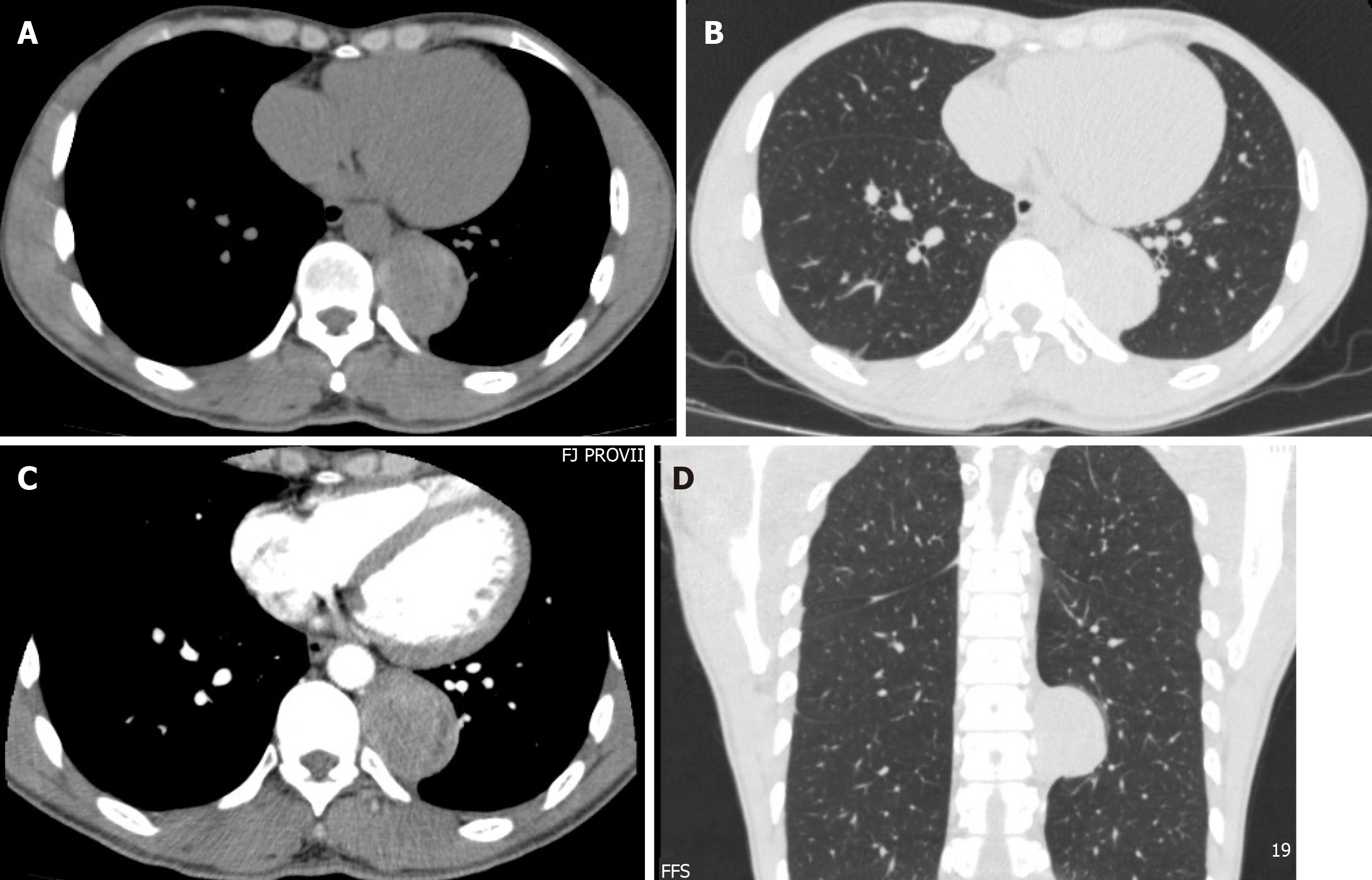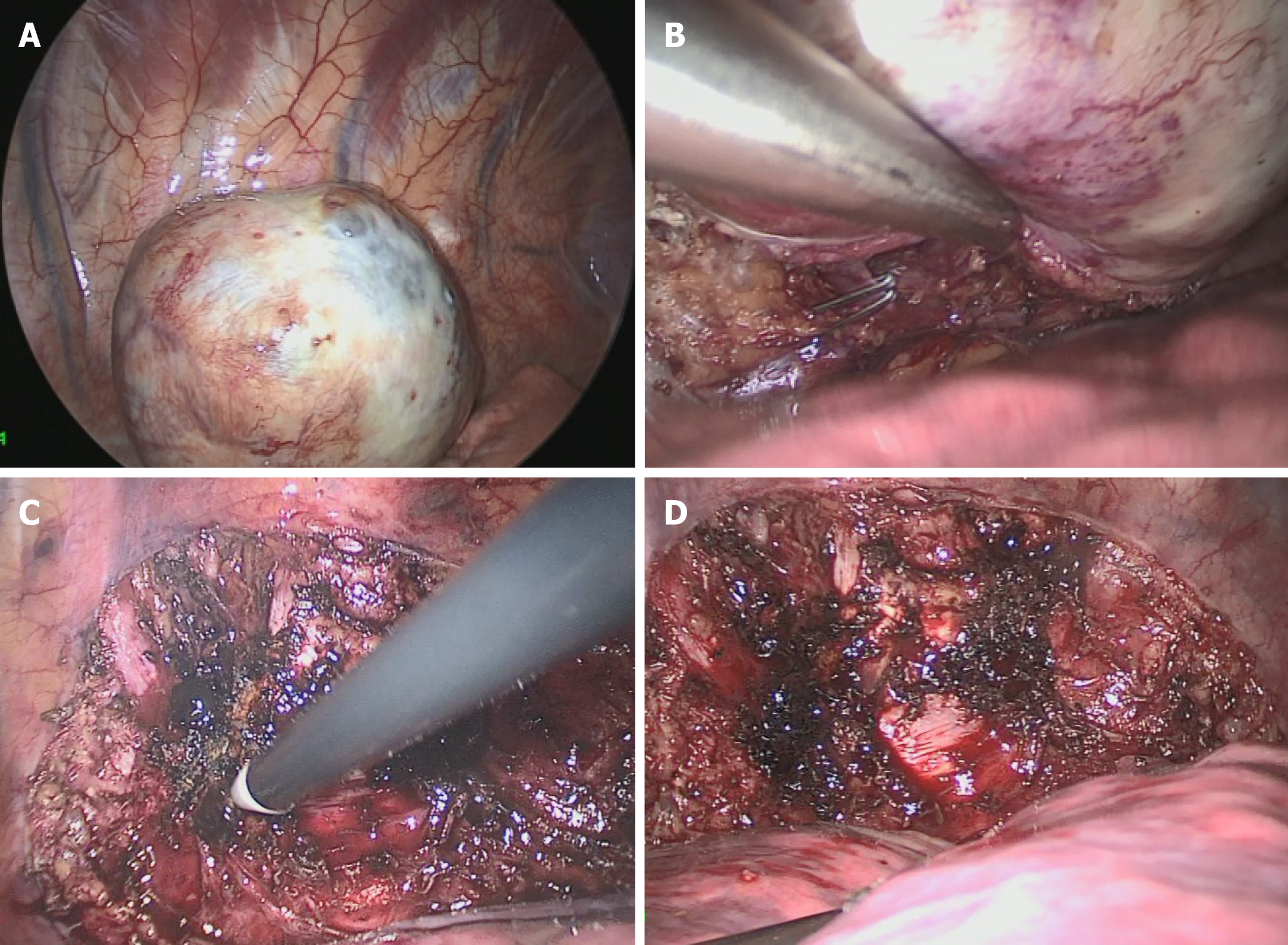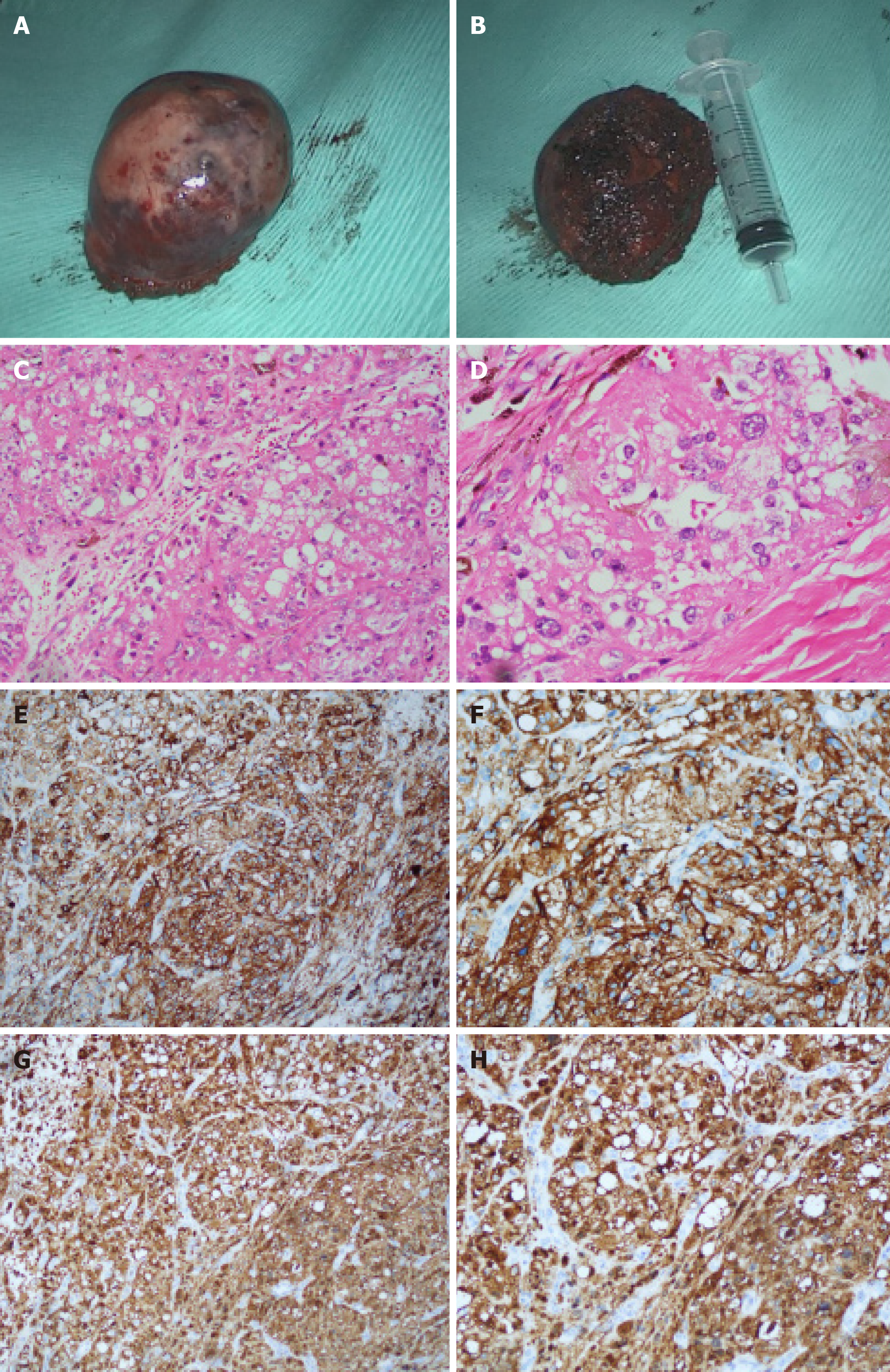Copyright
©The Author(s) 2019.
World J Clin Cases. Oct 6, 2019; 7(19): 3126-3131
Published online Oct 6, 2019. doi: 10.12998/wjcc.v7.i19.3126
Published online Oct 6, 2019. doi: 10.12998/wjcc.v7.i19.3126
Figure 1 The computed tomography scan indicated a paravertebral mass close to the thoracic aorta.
A: Transverse view in mediastinal window of normal computed tomography (CT) scan; B: Transverse view in lung window of normal CT scan; C: Transverse view in mediastinal window of enhanced CT scan; D: Horizontal view in lung window of normal CT scan.
Figure 2 A video-assisted thoracoscopic surgery was performed to remove the mass.
A: The tumor located on the posterior chest wall nearby the 9th thoracic vertebra; B: The drain vein to the hemiazygos vein was ligated by hemoclips; C: The tumor was dissected carefully by the electrocautery and Harmonic in turns; D: The base plane on the chest wall was deal with the electrocoagulation.
Figure 3 Cystic mass and immunohistochemical staining.
A, B: The tumor was removed under en bloc dissection with a relative clear margin; C, D: Hematoxylin-eosin stain: Neoplastic cells are arranged in irregular nests separated by fibrous septa. Cells are round or oval in shape with regular vesicular nuclei and prominent nucleoli, moderate to abundant eosinophilic or clear cytoplasm; E, F: Neoplastic cells showed a strong immunohistochemical expression of melanocytic marker: S100 (+); G, H: Neoplastic cells showed a strong immunohistochemical expression of melanocytic marker: HMB-45 (+).
- Citation: Chen YT, Yang Z, Li H, Ni CH. Clear cell sarcoma of soft tissue in pleural cavity: A case report. World J Clin Cases 2019; 7(19): 3126-3131
- URL: https://www.wjgnet.com/2307-8960/full/v7/i19/3126.htm
- DOI: https://dx.doi.org/10.12998/wjcc.v7.i19.3126











